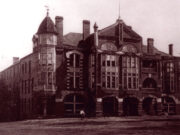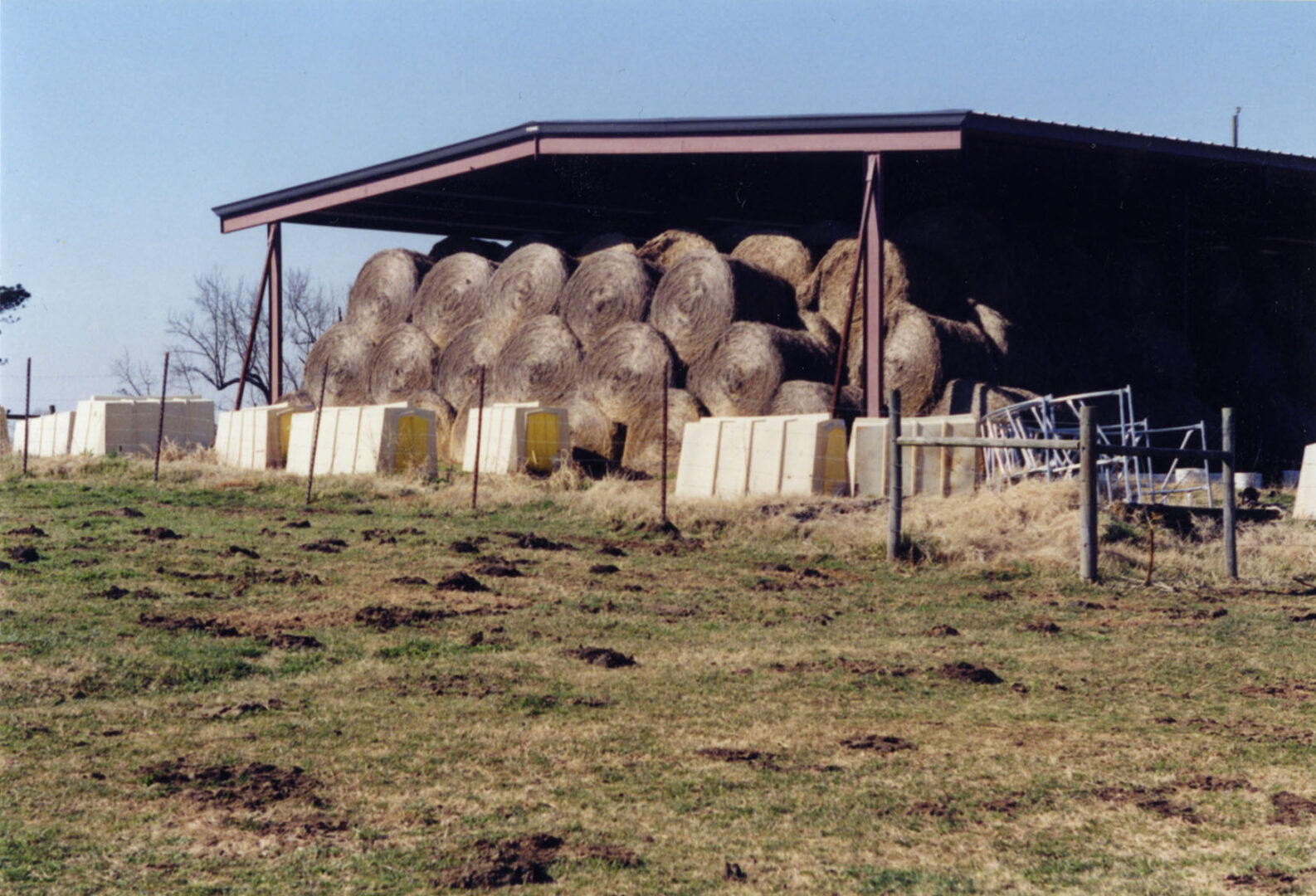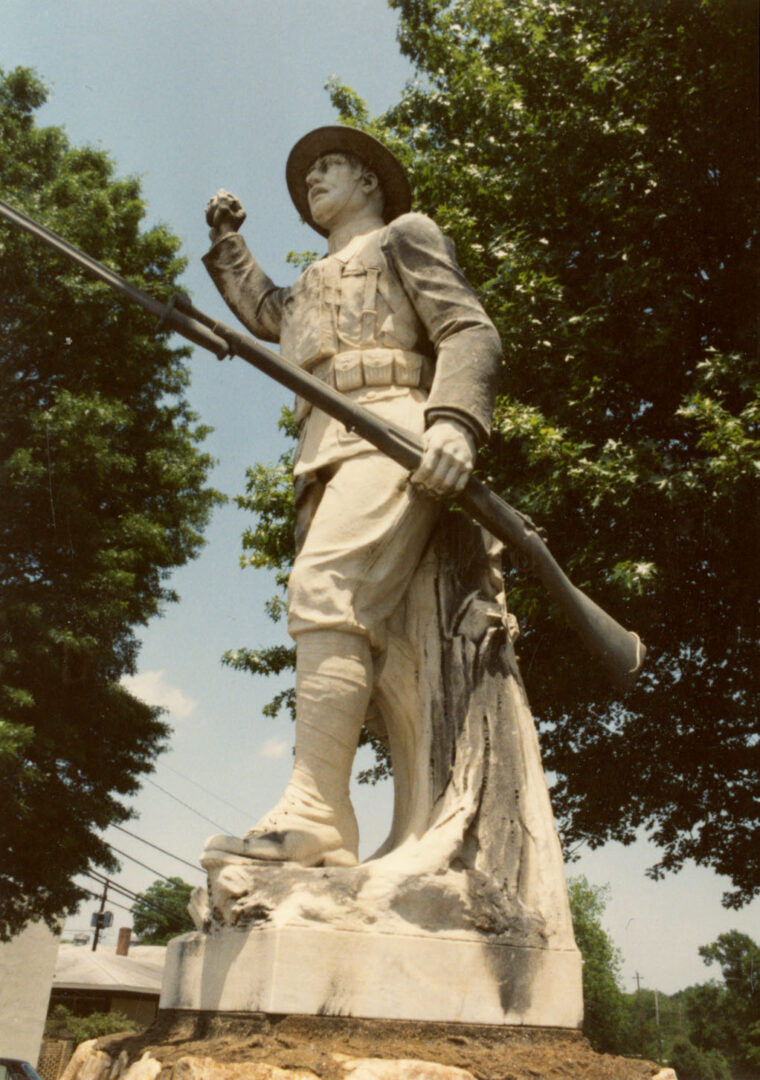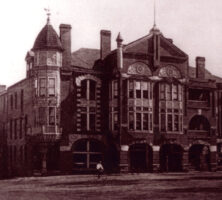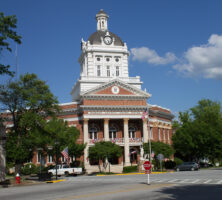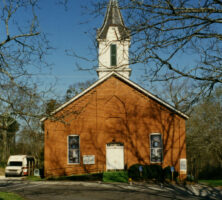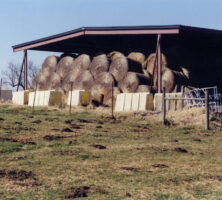Morgan County, in central Georgia, was created from Baldwin County by an act of the state legislature in 1807. It was named in honor of Revolutionary War (1775-83) general Daniel Morgan. In 1809 the town of Madison was incorporated and named the county seat.
Until 1818, when Walton County was created, Morgan County was a part of the western frontier of Georgia—all lands to the west of it being Creek Indian territory. This situation was forcibly brought home in 1813, when Creeks attacked settlers in the western portion of the county, in what is now Hard Labor Creek State Park, northwest of the town of Rutledge. Some ten or eleven people were killed in the attack, which may have been made in conjunction with the Creek alliance with the British in the War of 1812 (1812-15).
The 1820 census lists “13,520 souls” for Morgan County, of whom 44.7 percent were enslaved. The next few decades saw a general decline in the white population, while the enslaved population increased with the coming of large cotton plantations. By 1890 the county’s population was up to 16,041, but the cotton boll weevil crisis of the 1910s and 1920s, and the Great Depression of the 1930s, led to a drastic decrease. However, the 2010 census showed Morgan County’s population to be 17,868, and by 2020 the population had climbed to 20,097.
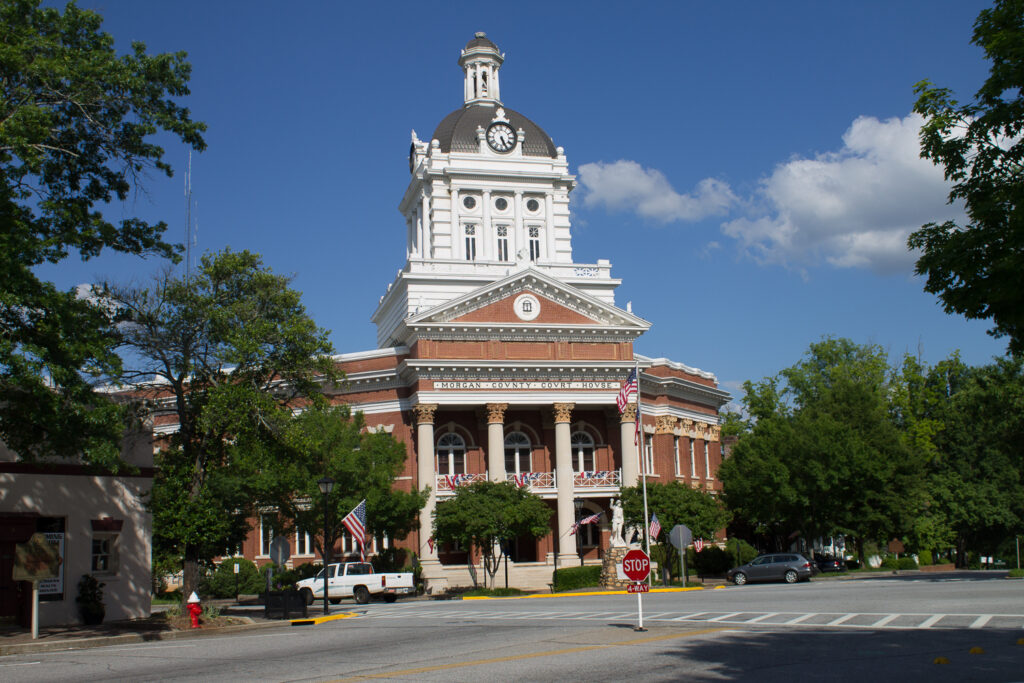
By 1841 the Georgia Railroad had reached Madison and, soon after that, Rutledge, bringing businessmen and early tourists to the county, with hotels and boardinghouses springing up to accommodate them. Before the Civil War (1861-65) two colleges for women were founded in Madison: Georgia Female College, incorporated in 1849 as the Madison Collegiate Institute, and Madison Female College, established in 1850. These colleges, which no longer exist, along with private academies, placed Morgan County among the educational centers of Georgia at that time. The early 1870s marked the beginning of public school education in the county and the decline of private academies.
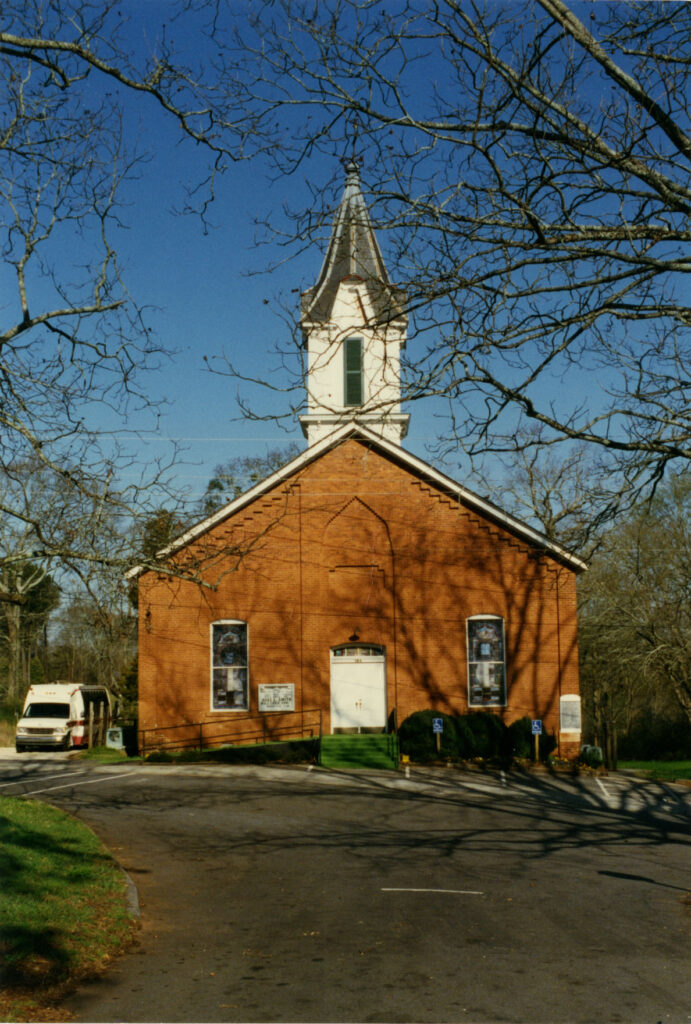
Near the end of the Civil War, the Union troops of General William T. Sherman’s army swept through the county on the March to the Sea, burning railway depots, cotton gins, and warehouses, and wrecking the railroads for miles. Sherman’s men set afire an old cotton mill that had once been a prison for Union officers, though it did not burn completely. Most houses were spared, though a few of them were burned, including the plantation house of the antisecessionist Joshua Hill, former senator from Georgia.
By the late 1880s another railroad, the Macon and Northern (originally the Covington and Macon), came to Morgan County. The towns of Rutledge, Godfrey, Apalachee, and Buckhead, as well as Madison, were serviced by these two railroads. A third railroad, now defunct, served the town of Bostwick. In the post–Civil War era cotton remained the county’s principal product, though on a smaller scale. This continued into the twentieth century, until the devastation caused by the boll weevil brought another agricultural endeavor: dairying. From the 1930s through the 1960s Morgan County became one of the principal milk producers of Georgia. In the 1970s and 1980s timber production also became an important income source for Morgan County landowners.
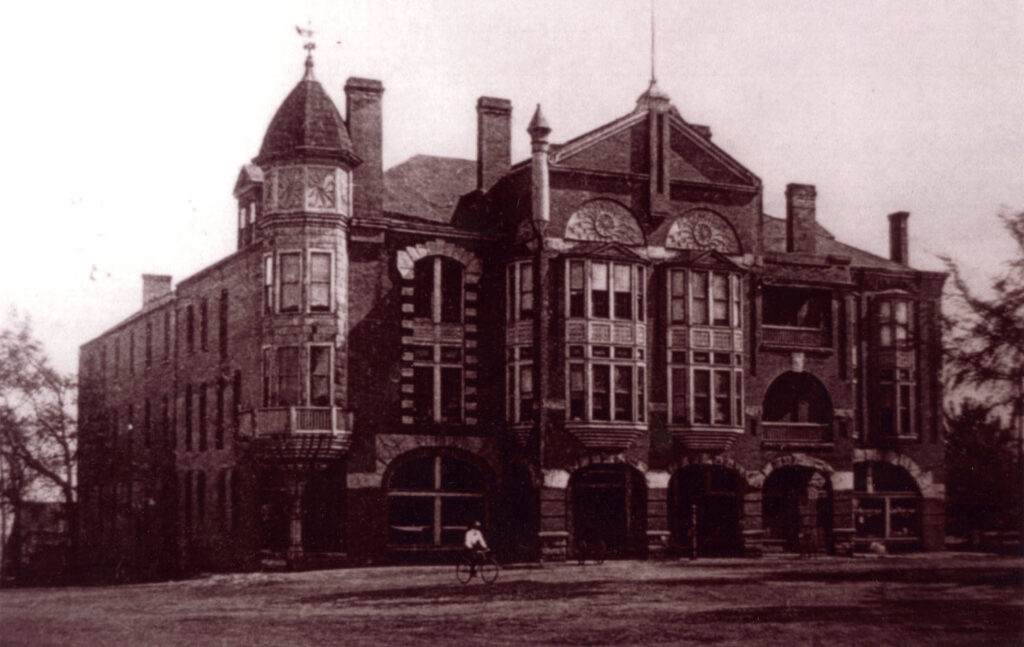
The coming of Interstate Highway 20 through the county in the early 1970s accelerated the growth of industry and tourism in the area. Lake Oconee, a Georgia Power Company facility, also has been a significant catalyst for growth in the county. The county’s economy is becoming more diverse: cotton farming is making a comeback, dairying is still going strong, timber production continues, and tourism is booming. One of the largest employers is Georgia-Pacific.
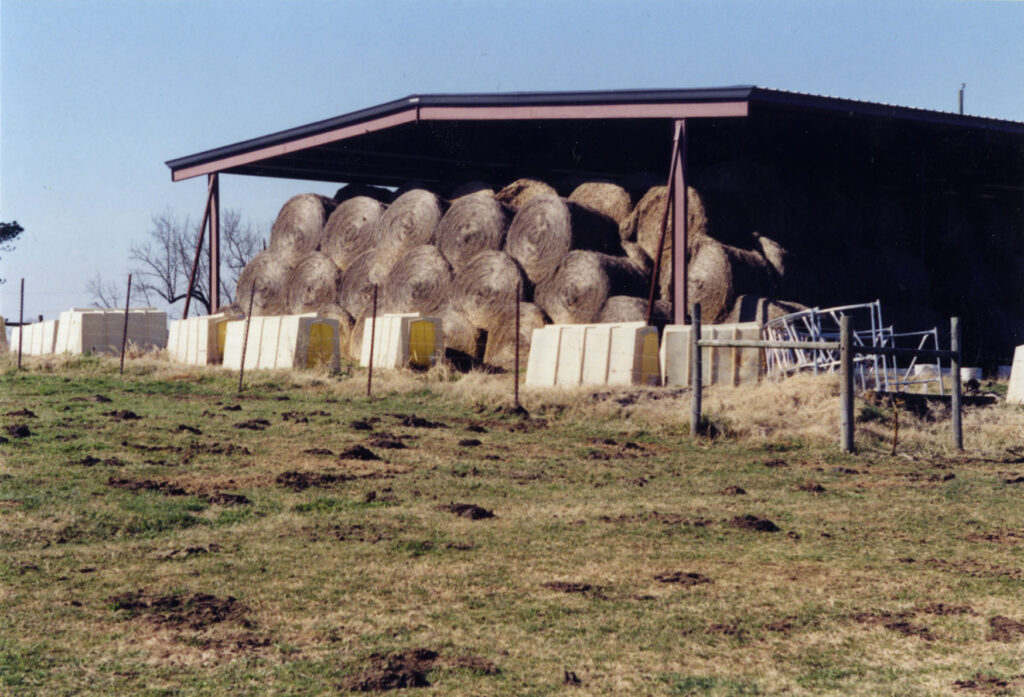
Morgan County still maintains its rural character, though it is within an hour of Atlanta on Interstate 20 and thirty minutes from Athens and the University of Georgia. Well-known residents of the county include historian Albert B. Saye and self-taught artist George Andrews, the father of artist Benny Andrews and writer Raymond Andrews.


